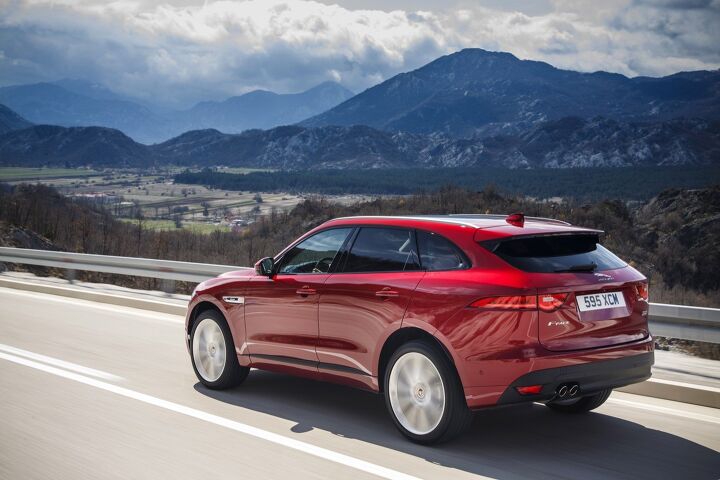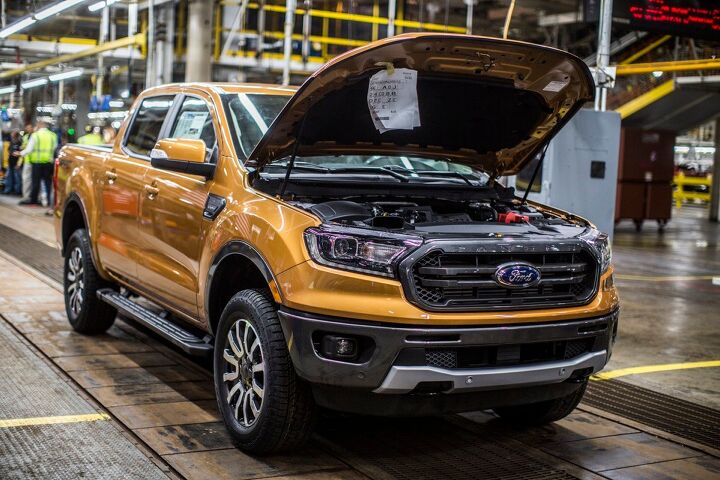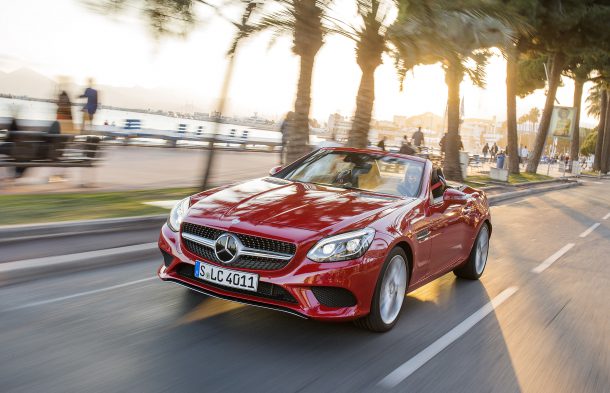#Sales
Toyota Prepared to Drop the Blade, but Which Models Will Get the Chop?
Toyota isn’t immune from the light truck epidemic sweeping the globe; certainly not in North America. In October, the automaker saw light truck sales across both of its divisions rise 6.8 percent, year over year, in the United States, offsetting an 7.2 percent drop in passenger car sales. Tally that volume up over the first 10 months of 2018 and the picture’s even more stark. Year to date, trucks are up 7.7 percent, cars are down 11.1 percent.
The automaker’s North American CEO admits it’s looking at passenger car candidates for execution.
As Troubles At Home Hit Subaru's Bottom Line, Americans Do Their Duty and Hand the Brand Another Record
Subaru reported an operating loss in its most recent fiscal quarter, with recalls and regulatory scandals in its home market dragging the company into the red. The company said it lost $22 million in the quarter ending September 30th, a departure from last year’s $816.3 million operating profit. Meanwhile, global volume fell 6 percent.
In the company’s largest market — the United States — it was an entirely different scenario, with American buyers conspiring to give the brand its 83rd consecutive year-over-year sales increase. A record for October, too, but that’s sort of a given. Very nice of those buyers, but the credit really belongs to the Ascent crossover.
Sure, GM Europe Is Gone, but the Automaker Hasn't Entirely Pulled up Stakes
General Motors vacated the continent in fine style last year, flushing the Vauxhall and Opel brand to Groupe PSA in a deal worth about 2.2 billion Euro. However, it turns out Ren Cen remains as a lingering presence in moving metal across the pond.
All this was spurred by a tweet by David Shepardson of Reuters revealing The General sold about 3,000 vehicles in the first nine months of 2018, compared to 684,000 during the same period one year ago. This makes sense, given the sloughing of Vauxhall/Opel.
Since the word “Europe” shows up exactly zero times in GM’s Q3 earnings report, it left your author wondering: what models comprised those sales? Not the ones I thought, as it turns out.
October 2018 U.S. Auto Sales: Last Month Brought More Treats Than Tricks for Most Automakers
More mainstream brands saw year-over-year rises in sales volume last month than those who endured a sojourn into the red. It will surprise exactly no one to learn those who did earn sales growth largely did so on the backs of trucks, SUVs, and crossovers.
Nowhere was this more apparent than at Genesis, a brand peddling some excellent cars but – for the moment – completely bereft of an offering in America’s hottest segment. Fiat Chrysler, on the other hand, had a particularly strong October thanks to its top-heaviness in each of those markets.
As Sales Slump, Jaguar Land Rover Moves to Plug Leaks
It’s not oil dripping onto a snooty cobblestone driveway this time around — it’s cash. Following the release of its latest quarterly fiscal report, Jaguar Land Rover announced a plan to plug the leaks threatening its existence.
The automaker cites declining sales as the reason for a 10.9 percent drop in revenue for the three month period ending September 30th, with buyers in China, the U.S. and Europe taking much of the blame. Globally, sales fell 13.2 percent in the last fiscal quarter, with the total volume of vehicles sold by both brands falling below the number of Chevy Silverados sold in the U.S. last quarter. Jag needs to fatten up those seals.
Best Selling Vehicle In Metro Detroit? Nope, Try Again
Here’s a question we are certain is causing sleepless nights for a wide swath of our readership: What is the most popular vehicle in Metro Detroit?
I know! It’s a topic that’s occupied my mind as well, especially while enduring long hours on the semi-pro karaoke circuit. Verticalscope would rather you click on the jump to find the answer, however, rather than give it to you here above the fold … but we will tell you this: it’s most certainly not the Ford F-Series pickup.
In fact, that truck line doesn’t even rank high enough for a podium finish.
Hyundai Pickup Still Not Greenlit; Two Years From Production If It Is
The timeline of Hyundai’s long-anticipated pickup calls to mind Lt. Frank Drebin’s description of lovemaking: “It’s a painstaking and arduous task that seems to go on and on forever, and just when you think things are going your way, nothing happens.”
While a production version of Hyundai’s 2015 Santa Cruz concept once seemed like a sure thing, the would-be model still doesn’t have the backing of Hyundai brass, meaning it won’t trundle down an assembly line for at least two years. If it does receive the green light, however, Hyundai’s sticking with its plan to create its own niche in an increasingly crowded small pickup market.
U.S. Midsize Pickup Truck Market Share Is at a Nine-Year High, Just In Time for a New Ford Ranger
Just ahead of the launch of a new Ford Ranger, production of which began earlier this month, midsize trucks’ share of the overall U.S. pickup truck market is up to a respectable nine-year high.
Thanks to significant year-over-year improvements from the two top sellers in the segment plus meaningful increases from the third and fourth-ranked midsize pickups, category-wide volume has grown by more than 60,000 units during the first nine months of 2018. Compared with the same period in 2017, volume in the much larger full-size pickup truck segment hasn’t even grown by half that much.
If you’re a pickup truck buyer, you remain far more likely to acquire a full-size F-150, Silverado, Ram, Sierra, Tundra, or Titan than a Tacoma, Colorado, Frontier, Canyon, or Ridgeline. But the slice of the pie afforded to the five-strong midsize sector is above 18 percent for the first time since 2009.
Could the new Ford Ranger push midsize trucks over the one-fifth mark for the first time since 2006?
The Subaru Ascent Is Doing Just What Subaru Expected: Cannibalizing
Operating in a higher price spectrum and with Subaru’s typically tight grip on the incentive account, there’s no telling what the new Ascent is doing for Subaru’s bottom line. But as Subaru conservatively predicted, the Ascent isn’t generating much in the way of greater sales activity inside Subaru showrooms.
Instead, the Ascent is growing Subaru’s volume by the leanest of margins, in part because it’s by no means a segment leader in sales; partly because nearly all of Subaru’s other models are suffering significant sales slowdowns.
Fortunately for Subaru, the Ascent is now selling at the approximate pace Subaru had forecasted. But it appears to be doing so at the expense of other Subarus.
The Cost of Going Further: Long-range Nissan Leaf Carries a Premium, Has Sights Set on GM
Nissan did Leaf fans a favor when it upped the model’s driving range to 151 miles for 2018, a healthy increase from the previous generation’s 107 miles. Still, 151 miles falls well short of the industry’s nice-sounding gold standard of 200 miles — the figure to beat (or at least reach) for most automakers. With range like the new Leaf’s, long-distance travel remains complicated, inconvenient, and perhaps even impossible.
It’s no secret that Nissan plans to offer an upgraded battery next year, but just how much extra cash you’ll need for that 60 kWh model remained a mystery. Until now.
Order Up: Nearly 1 Million Plug-ins Sold in America
Remember when McDonald’s used to put a running total of the “Billions Served” on its golden arches? EV makers may soon be able to do the same for their sales efforts. According to Wards Auto, total sales for plug-in hybrid or electric vehicles over the last ten years will soon reach the 1 million mark.
And, like McDonald’s, manufacturers of cars which run solely on electrons are all serving up variations on what’s essentially the same dish, but adding different ingredients here and there.
Low-priced New Vehicle Buyers Are Missing in Action
Once a bracket where most desirable vehicles lived, the sub-$20,000 price range is not the hot neighborhood it once was. The ever-upward creep of new vehicle MSRPs increasingly places most vehicles above that marker, and shifting consumer trends haven’t helped expand its ranks.
According to data from J.D. Power, 2018 has seen a rapid exodus from the cheap seats, with retail volume from the $20k-and-under crowd sinking 20 percent since the start of the year. Big spenders, on the other hand, are gobbling up $80,000-plus vehicles at a rapid clip.
Subaru Manages to Buck An Industry-wide Trend in September
U.S. auto sales took a roughly 7 percent year-over-year dive in September, pulling the market’s year-to-date sales total further in the red. The industry-wide sales gain seen in the first half of the year is gone.
At Subaru, however, good timing and the continued popularity of a certain model kept the automaker from joining the ranks of its rivals (a group that does not include a beaming Fiat Chrysler). The automaker somehow managed to pull off a win in a dismal month, and it’s still up on a year-to-date basis, despite having so many minuses on its sales ledger.
Mercedes-Benz's Massive Family Could Lose Some Members
Mercedes-Benz isn’t exempt from the normal ebb and flow of product lines, but no one would claim that the German automaker doesn’t have a crowded house. Coupe-ified versions of its utility vehicles proliferated in recent years, as have AMG variants of existing models.
This is an automaker with three roadsters. Coupes and convertibles spring from everywhere at once.
As Mercedes-Benz prepares to transition oversight of the company away from longtime CEO Dr. Dieter Zetsche, his chosen successor, Ola Källenius, admits the product family might require some paring.
Over the First Three Quarters of 2018, Only Four GM Cars Have Anything to Brag About
General Motors joined the vast majority of its automotive colleagues in having a crappy sales month in September, posting an 11.1 percent year-over-year volume loss. The issues facing OEMs last month were many. As interest rates rise and the market cools, automakers looking to capture more for their coffers are trending towards reduced fleet sales and lowered incentive spending. Hurricanes also played something of a role.
At GM, which graces us with sales figures just four times a year, what was likely a poor showing in September dragged down the third quarter as well as year-to-date sales, with volume since the start of the year now down 1.2 percent. That doesn’t mean several GM models didn’t have good quarters, or haven’t had good 2018s. Some 18 models can boast of YTD sales gains.
Of those 18, however, just four are passenger cars, and one member of the group already has one and a half feet in the grave.





























Recent Comments